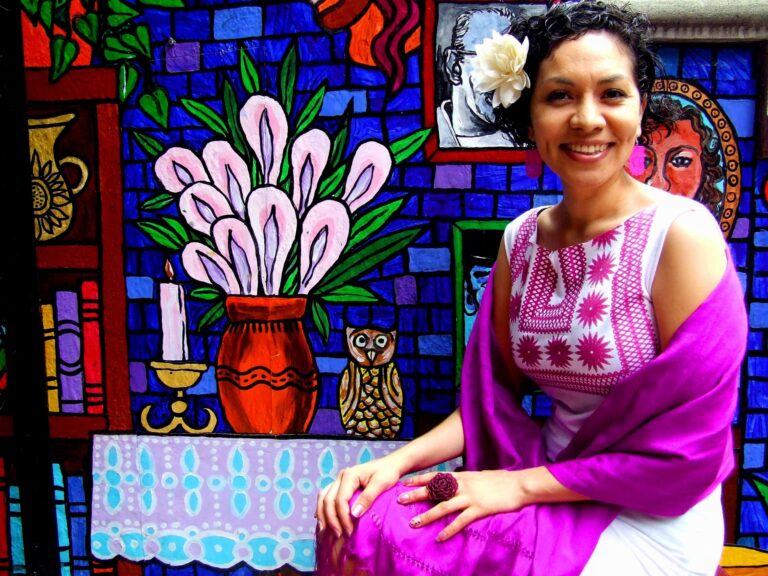What Netflix Taught Me About Character Development
I didn’t teach this summer so I was able to catch up on my cultural literacy—reading books and also binge-watching TV. Netflix is my dealer of choice, delivering whole seasons of House of Cards, Orange Is the New Black, and Arrested Development. The feeling I get when I’m on these jags is a cross between eating too much candy and being immersed in a good beach read: my eyes hurt, but I am spellbound. When the next episode appears right there on my screen, I can’t fight the urge to find out what will happen next.
This bingeing has also given me the chance to notice how the stories unspool over time (a short time, in my case); how the plot mechanisms fit together; and how the characters evolve over the course of the story. Something about being immersed in a world for a brief, intense period of time that forced me to see what the authors—in this case writers, directors, producers, and actors—were up to and how they went about accomplishing it.
Most of all I’ve been struck by the way these shows develop characters. It’s the way I invest in stories too. If I don’t care about the characters, I don’t care about the story (and often abandon it.) So instead of an essay on what I learned from my summer reading, here’s one on what I learned about character development from my summer watching.
Ambiguity Keeps You Wondering
Congressman Frances Underwood, the leading character in House of Cards, is a big fat jerk. He may even be the devil. I can say that now that I’ve seen the whole first season, but at the outset he seemed nice. Or at least sort of nice. Unblinkered and clear-eyed at worst.
Which is why I found him so mesmerizing. Underwood is creepy precisely because he’s likeable. You can imagine yourself going along with a lot of his well-thought out, innocent-seeming suggestions, unaware of his larger plans for revenge and greater personal glory. Besides, it feels gleefully transgressive to admire someone so less than admirable.
As the story goes on, however, he becomes a less ambiguous figure and more straight out despicable, and I think the story becomes less interesting, because you know what he will always choose the black hat, never the white. The story lost dimension when he did, and I found myself less engaged.
All of Your Characters Should be Interesting
Orange is the New Black tells the story of Piper Chapman, a WASPy white girl, who once joined an international drug ring as a post-collegiate thrill—and finally has her youthful indiscretion catch up with her. As the story opens, her fiancé is escorting her to federal prison and she is talking about reading her Amazon wish list and “getting ripped.” You know it’s not going to go the way she plans.
The story didn’t go to go the way I planned either. Piper is so naïve, her fiancé so forlorn, that I invested immediately and was annoyed when the story digressed into the lives of her fellow inmates. Why do I care about them? But as the episodes unspooled, I found myself caring about Piper less and less. She reveals herself to be less likeable, and naïve, than I first assumed, and the women around her have infinitely more complex and interesting backstories that soon had me hooked.
It was a nifty switch—hooking me with Piper and her fears, then parlaying that investment into a gamble on the other characters, some instantly likeable, some less so, but all compelling and complex. Even when Piper turns, I wasn’t annoyed so much as intrigued and gratified; the show would have gotten boring quick if she was just a goody-goody in the wrong place at the wrong time. But she can give as good as she gets. The characters around her are as full as she is, and together they make the story great.
Quirky Works
The reason Arrested Development makes for great watching, binge or otherwise, is that the subject matter is something we all can relate to: a struggle with family that would be a downer—or down right boring—without the humor and quirkiness the show delivers. While the Bluth family could, and heck probably does, exist, we wouldn’t believe it were true. But when it’s fiction, we buy in.
The extremes highlight the insanity of the mundane and keep the story from bogging down in boring reality. While one brother is taking his mother’s exhaled smoke into his mouth because she’s under house arrest, the other is moving into his son’s dorm after his remote housing development goes belly up. The details are extreme, but the situations are real. This mix of familiar and quirky makes the story work. It keeps watchers (so similar to readers) wondering what will happen next but doesn’t lose them by straying too far from reality. The situations are extreme; the emotions, the struggles, aren’t.
All of these lessons are valuable when it comes to writing fiction, too. So in the end, binge watching may be the best reading I’ve done all summer.

